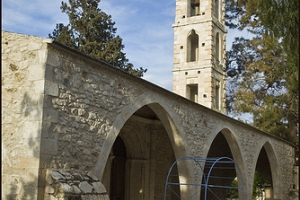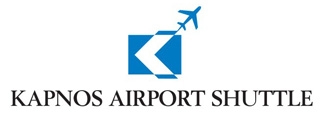TROULLOI
The village falls within the administrative borders of Larnaka and it is built on an altitude of 120 metres and at a distance of 15 km from the city of Larnaka. The community’s main topographical feature is that it is surrounded by hills shaped like domes (Troulloi) and this is where the naming of the village probably derived from. The highest hill is the hill named “Karavos”, which reaches and altitude of 256 metres and which is located west of the village.
Historical background
The area of the village has been inhabited ever since the ancient years, during which time the local mine, which is located within the administrative borders of the community, was intensively exploited. In fact, according to a tradition which seems relevant to the existence of the mine, Hephaestus, god of fire, established his workshop in the area of Troulloi when he was exiled from Olympus for giving fire to humans.
Hephaestus’ wife, Cypride Aphrodite, was worshipped near the community of Troulloi and more specifically at the ancient site of Golgoi, near Athienou. Located in the area of the village was possibly a temple dedicated to some Nymph, as this is revealed by an inscription found on a broken clay vessel which was discovered in the area.
Although the village has been inhabited ever since the ancient years, its present naming is not encounter in the medieval years. However, a housing named Chida, which was located in the same area, is marked on medieval maps.
Access to the village
As far as the road network is concerned, the village can be considered privileged since asphalted roads link the community with the village of Kellia towards the south (6,5 km) and through the latter with the city of Larnaka, while towards the west Troulloi is connected with Avdellero (5 km) and with Oroklini towards the southeast (7 km). Asphalted roads also connect the village with the occupied villages of Arsos and Lysi. Also at close proximity is the highway leading from Rizoelia to Agia Napa.
Population – Residents’ Occupations
As far as the population of the village is concerned, Troulloi has always been a pure village. Today it numbers approximately 1100 residents and several large families. Generally the residents have very close ties with their community, they preserve a lot of customs and remain faithful to the Greek Christian tradition.
Moreover, urbanisation has ceased and the youth decide to remain in their village as a result of the borderland redevelopment measures which are implemented by various governments.
As far as their occupations were concerned, in the past the residents of the village mainly dealt with farming and live-stock breeding. Due to the low annual rainfall of the area –approximately 300 mm – people in the village mainly cultivated wheat and barley, as well as olive and carob trees which are cultivations that do not require frequent irrigation. However, after the Turkish invasion of 1974, when a large cultivable land expanse was occupied, the residents were forced to turn to other professions.
Operating in the community today is a grocery store, a bakery, a boutique, hair salons, flower shops, butcher shops, a construction materials shop, sanitation equipment storage facilities, a car workshop, a marble factory and a lot more, most of which constituting family businesses.
Also, spread in the area are several live-stock breeding units which breed cows and goats and sheep. However, several residents continue to work as farmers, while others are employed in the neighbouring city.
Finally, before the Turkish invasion many women dealt with basketry. However, this profession has today been entirely abandoned.

























